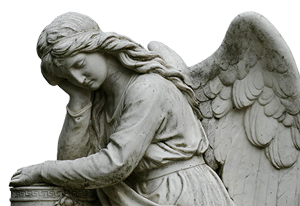| Name of cemetery: | San Jose I Cemetery |
| Location of cemetery: | 700 block of Montopolis Dr., Austin, Texas |
| Driving Directions: | Take 183 south, turn right on Montopolis. Go south on Montopolis, cemetery is on right side, between Ponca St. and Richardson. |
| Appearance: | Abandoned; overgrown with high grass, shrubs, small trees, rose bushes; head stones hard to see. |
| Date transcribed: | June 2008, Updated April 2023 |
| Transcribed by: | Mary M. Elizabeth |
| Notes: | THIS LISTING IS IN ALPHABETICAL ORDER ONLY. Early settlers identified in previous censuses marked with * after name.There are two previous censuses. One by Austin History Center (AHC) with no date and one in 1983 by Arturo G. Aleman. Headstones are the primary source of data. Previous censuses are secondary sources. Some listings were taken from death certificates. |
| Please note | This page is part of the Austin Genealogical Society’s Cemetery Transcription Project. This information was compiled by volunteers who either transcribed historical records or visited the cemetery to write down the names and dates. Unless noted, the volunteer is not an affiliate of the cemetery. |
San Jose I is located in the 700 block of Montopolis Drive in Austin, Texas. The closest street on the north side is Ponca and on the south side is Richardson. The west boundary of the cemetery is parallel to Culp St. On the north side about half way between Montopolis and Culp the north boundary of the cemetery meets Short Kemp St. Next to the cemetery on Montopolis Drive to it at the north side is the St. Edward Baptist Church. There is a white clapboard church building next to the cemetery at the south side. Neither church is associated with the cemetery.
The entrance to San Jose I is on Montopolis Drive. There are steps leading up to the cemetery and the name of the cemetery in a metal arch above the steps. The remains of the original entrance to San Jose I are at the northwest corner of the cemetery.
San Jose I looks old and its lack of continual caretaking over the decades is apparent. It is usually mowed now but the grass is not watered and there are patches of bare ground in places. The rows of headstones are not straight or uniform. Empty spaces between graves and sunken spaces indicate graves that are no longer marked. There are many broken and very weathered headstones. Trash and litter are often present on the east side of the cemetery.
Most of the headstones are old and hand made out of cement. They are usually lettered by hand and display all levels of artistic ability and spelling. Several are covered with black structural tile. There are a few children’s headstones still decorated with some of the marbles that originally covered them. Others retain some of the shells or hexagonal tiles that originally decorated them. There are cement crosses, some that bear epitaphs. A few wooden crosses still survive.
Although there are several types of headstones that are recognizable each one is unique. Generally there is little uniformity in size, shape, and composition. Although most are made of cement there are some of granite and marble. Some graves are marked only with metal funeral home markers. Some have only a cement border.
In the larger area of the cemetery closest to Montopolis Drive the headstones face east. In the smaller and original plot on the west side the headstones face north.
There is a path that winds generally through the center of the cemetery toward the northwest which members of the surrounding community use to get to businesses on Montopolis Drive.
In about the center of the cemetery stands a very old live oak tree. To the south of this tree are two family plots marked by a central obelisk surrounded by an iron fence or cerca in the shape of a five pointed star.

